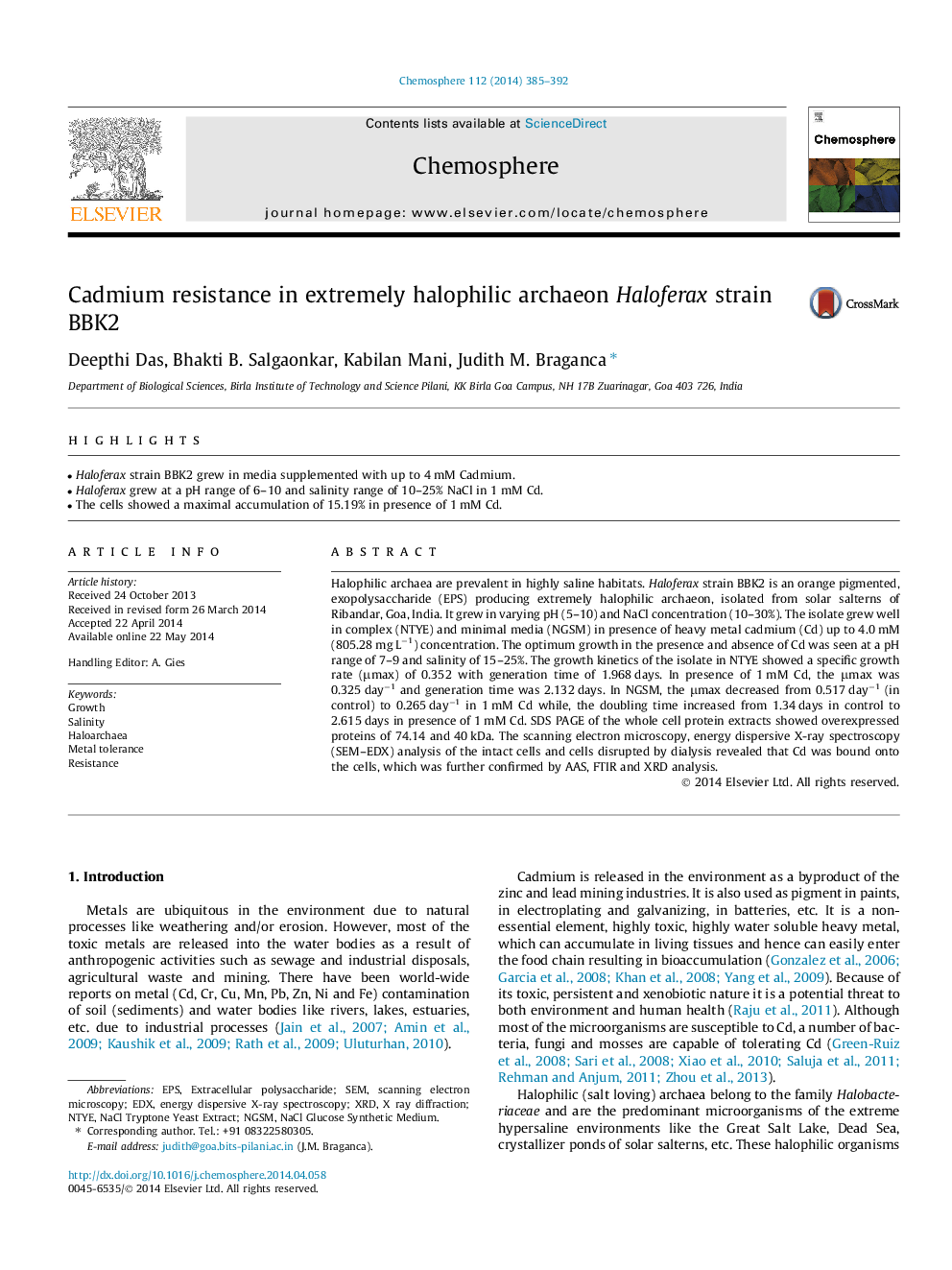| کد مقاله | کد نشریه | سال انتشار | مقاله انگلیسی | نسخه تمام متن |
|---|---|---|---|---|
| 6308858 | 1618859 | 2014 | 8 صفحه PDF | دانلود رایگان |

- Haloferax strain BBK2 grew in media supplemented with up to 4Â mM Cadmium.
- Haloferax grew at a pH range of 6-10 and salinity range of 10-25% NaCl in 1Â mM Cd.
- The cells showed a maximal accumulation of 15.19% in presence of 1Â mM Cd.
Halophilic archaea are prevalent in highly saline habitats. Haloferax strain BBK2 is an orange pigmented, exopolysaccharide (EPS) producing extremely halophilic archaeon, isolated from solar salterns of Ribandar, Goa, India. It grew in varying pH (5-10) and NaCl concentration (10-30%). The isolate grew well in complex (NTYE) and minimal media (NGSM) in presence of heavy metal cadmium (Cd) up to 4.0 mM (805.28 mg Lâ1) concentration. The optimum growth in the presence and absence of Cd was seen at a pH range of 7-9 and salinity of 15-25%. The growth kinetics of the isolate in NTYE showed a specific growth rate (μmax) of 0.352 with generation time of 1.968 days. In presence of 1 mM Cd, the μmax was 0.325 dayâ1 and generation time was 2.132 days. In NGSM, the μmax decreased from 0.517 dayâ1 (in control) to 0.265 dayâ1 in 1 mM Cd while, the doubling time increased from 1.34 days in control to 2.615 days in presence of 1 mM Cd. SDS PAGE of the whole cell protein extracts showed overexpressed proteins of 74.14 and 40 kDa. The scanning electron microscopy, energy dispersive X-ray spectroscopy (SEM-EDX) analysis of the intact cells and cells disrupted by dialysis revealed that Cd was bound onto the cells, which was further confirmed by AAS, FTIR and XRD analysis.
Journal: Chemosphere - Volume 112, October 2014, Pages 385-392